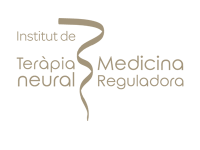11 Minutes
Previously known as manic-depressive disorder, bipolar disorder is a mental illness with rapid and extreme shifts between depressive and manic emotional states. Commonly appearing in teenage and adolescents, the condition affects approximately 2.6 percent of the U.S. adult population. Living with bipolar disorder is undoubtedly challenging, as the symptoms tend to linger for days or weeks. While it may make someone feel supercharged, sharp, and invincible at one point, these feelings of mania rapidly drain and are quickly replaced by a depressive episode to dash all the happy dreams. The constant cycling between these episodes can leave the afflicted individual feeling sad, fatigued, and defeated. Moreover, the intense mood shifts can be extremely disruptive even if long periods of calm separate them.
While there is no definitive cure for bipolar disorder, it is possible to manage it with medication, therapy, and self-education about it and its common types.

FAQs
A UNIQUE METHOD TREATING Bipolar
a successful and proven concept focusing on underlying causesBipolar TREATMENT LASTING APPROACH
0 Before
Send Admission Request
0 Before
Define Treatment Goals
1 week
Assessments & Detox
1-4 week
Psychological & Holistic Therapy
4 week
Family Therapy
5-8 week
Aftercare
12+ week
Refresher Visit
Bipolar Insights
latest news & research on Bipolar
Dysphoric Mania
Dysphoric mania is an intricate and demanding state because it combines the features of mania, such as increased energy and impulsivity, with the signs of depression and its discomfort
read more
Bipolar Disorder: Common Misconceptions & Our Unique Approach
Bipolar Disorder is one of the most common mental health conditions in the world. It is estimated that every 1 out of a 100 people have bipolar disorder.
read more

































































